ETW Part 2: Process Parent Spoofing
Process Parent Spoofing
A lot of the current state of the art detection techniques rely on
process creation logs, and their implied parent/child
relationships. For example, many detection rules alert when Powershell
is launched from WinWord.exe as it typically indicates a macro has
started a powershell payload.
Many people are sometimes surprised to learn that on Windows
parent/child process relationship is not particularly reliable. Back
in 2009, Didier Stevens released a demo tool called
SelectMyParent
demonstrating a quirk of the Windows CreateProcess API that allows any
caller to simply spoof the parent process ID. This is particularly
troublesome, especially when so much of the DFIR industry relies on
process tracing of parent/child call chain. Further, parent spoofing
does not require any special privileges and can be performed by
non-admin users as well.
Didier Stevens wrote about it again in 2017’s post That Is Not My
Child Process! where even
Sysmon and Volatility memory analysis are demonstrated to be
fooled by SelectMyParent!
If you thought this was an unknown technique, rest assured that most attack tools integrate parent process spoofing already. For example Cobalt Strike has been able to do this for a number of years now, and the technique is actively used frequently to avoid behavioural detection.
How can one detect this kind of spoofing? I found it surprising that there are no indicators that a process has been spoofed that can be gathered from an already running process (If you know of any, please let me know!). As Didier Stevens shows in his 2017 post above, even memory analysis can not reveal the real parent of a process.
The only way to learn that a process parent has been spoofed is using ETW, as outlined in the F-Secure post Detecting Parent PID Spoofing. Let’s play with this detection and see how effective it is.
Spoofing Parent processes
I will use Didier’s tool SelectMyParent to spoof notepad.exe as
being a child of OneDrive.exe. First I use the task manager to find
the Process ID of OneDrive and then start notepad with this as the
parent.

On this system I have Sysmon installed, so I will find the process creation event in the event viewer.
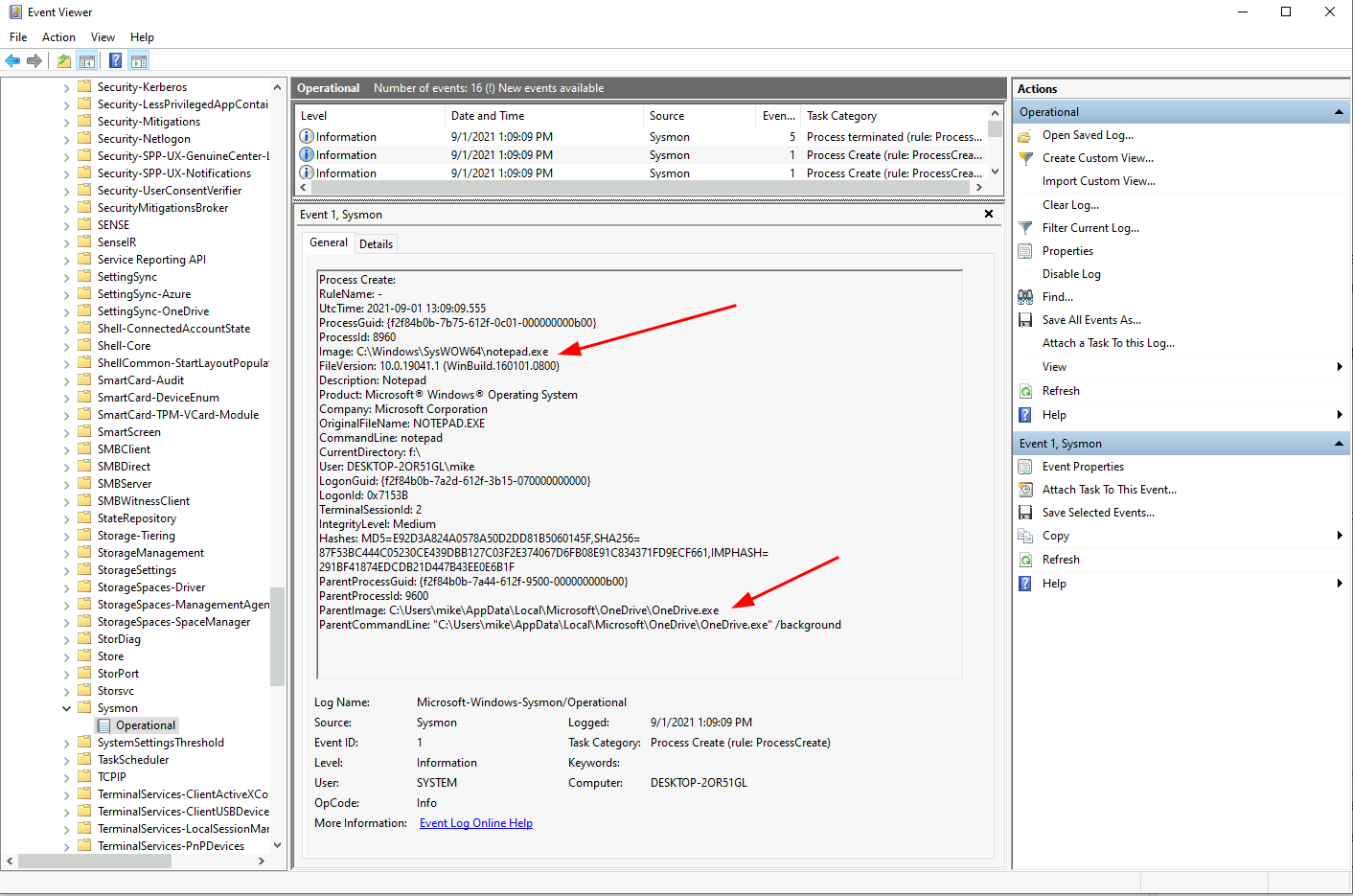
It shows the parent process of notepad is OneDrive.exe!
Let’s write a VQL query to detect this spoofing. According to the post
above, the provider to watch is the Microsoft-Windows-Kernel-Process
provider which has a GUID of
{22fb2cd6-0e7b-422b-a0c7-2fad1fd0e716}. Since the provider emits a
lot of information about all processes in the system, I will initially
narrow down event to only those that have notepad somewhere in the
event data.
SELECT *
FROM watch_etw(guid="{22fb2cd6-0e7b-422b-a0c7-2fad1fd0e716}")
WHERE serialize(item=EventData) =~ "notepad"
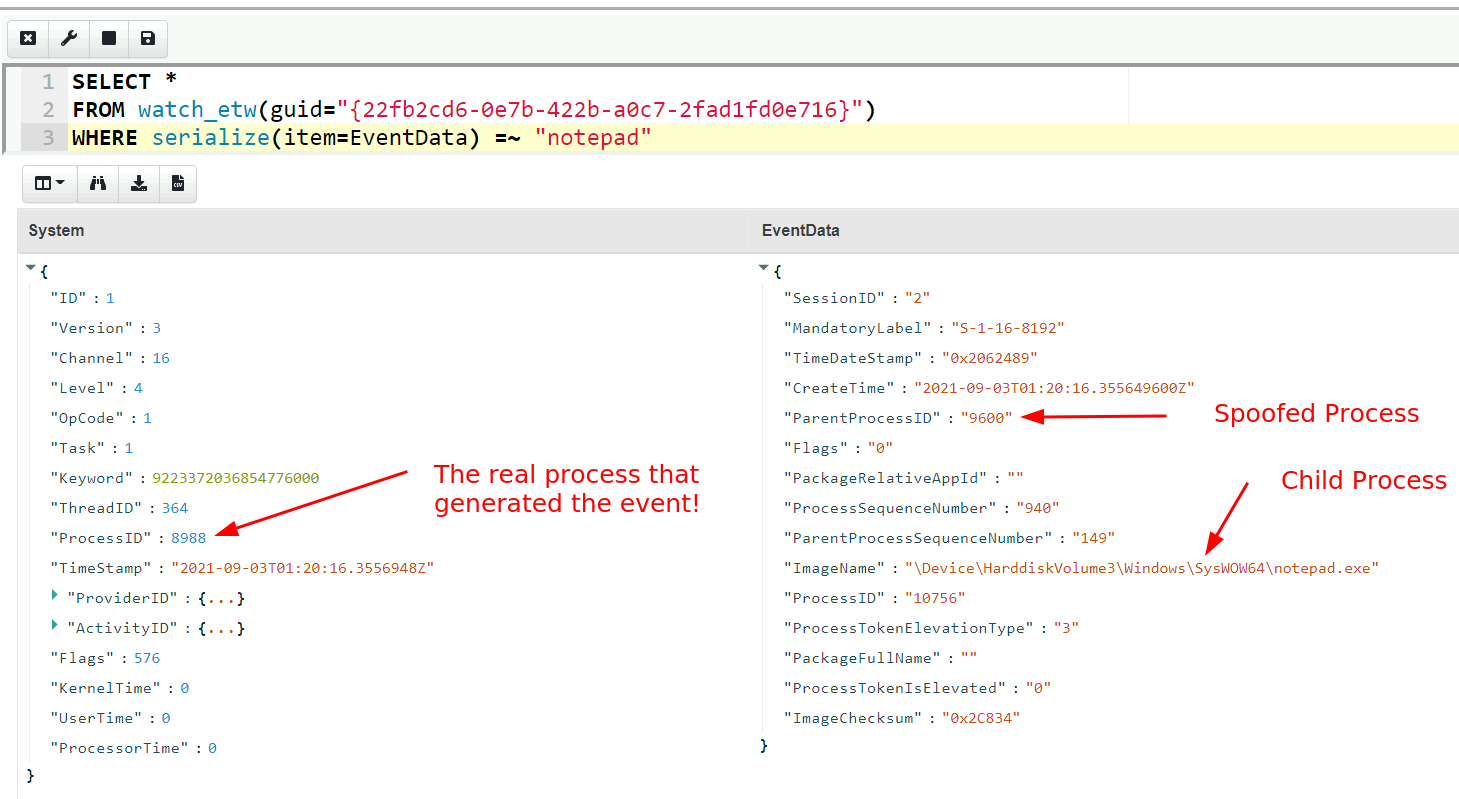
In the above query we can see the anomaly immediately! The process that generated the EWT event is not the same as the process parent pid!
This anomaly allows us to detect the spoofing behavior, now we just need to enrich the event with extra detail of the real parent, the spoofed parent etc. You can find the full VQL artifact on the Velociraptor Artifact Exchange here
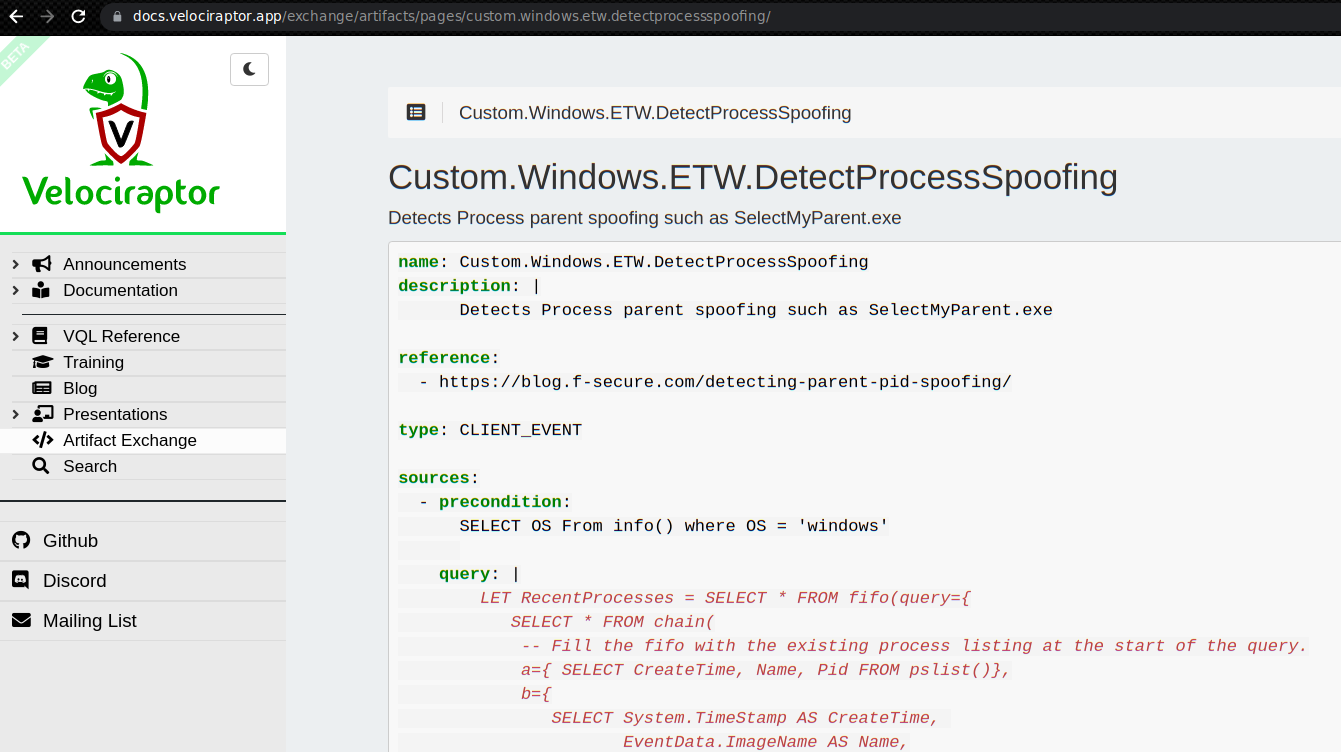
To add this artifact, I will navigate to the View Artifacts screen,
then click Add an Artifact button, then copy and paste the Artifact
definition from the exchange into the editor.
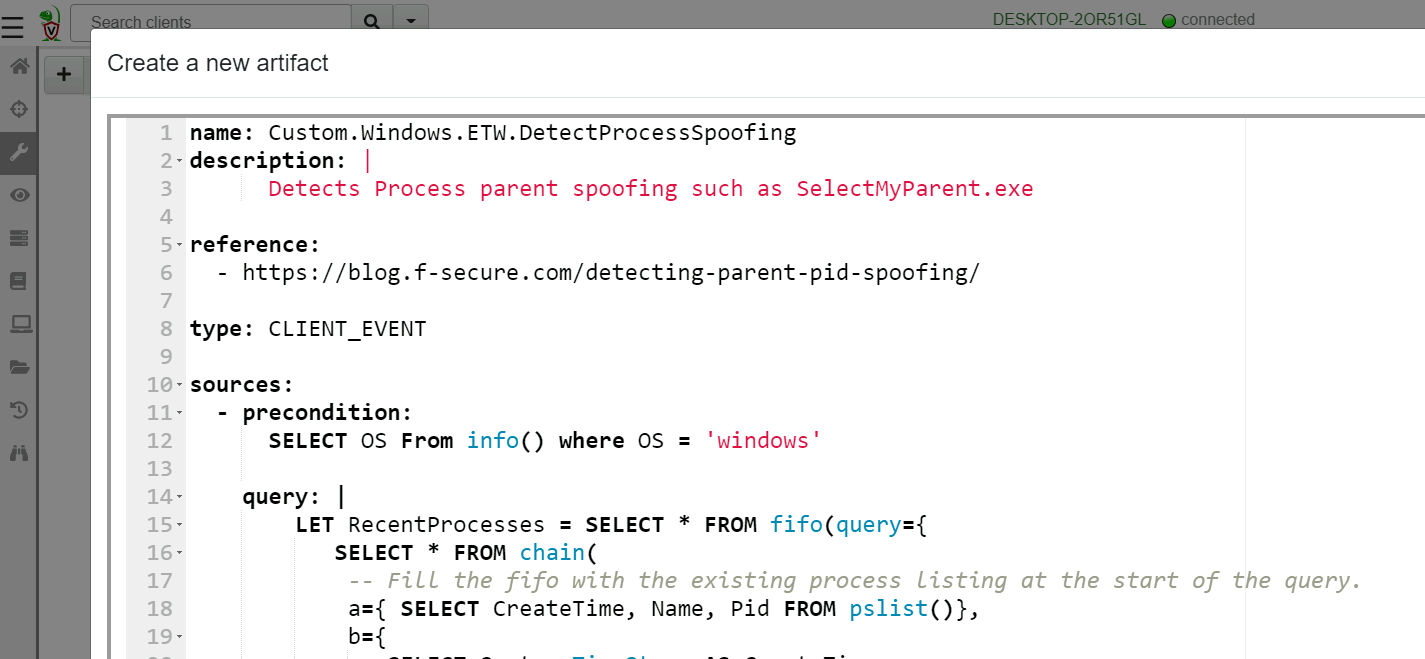
Now I will add this artifact to all client’s monitoring
configuration. I click the Event Monitoring screen in the GUI then
the Update client monitoring table button.
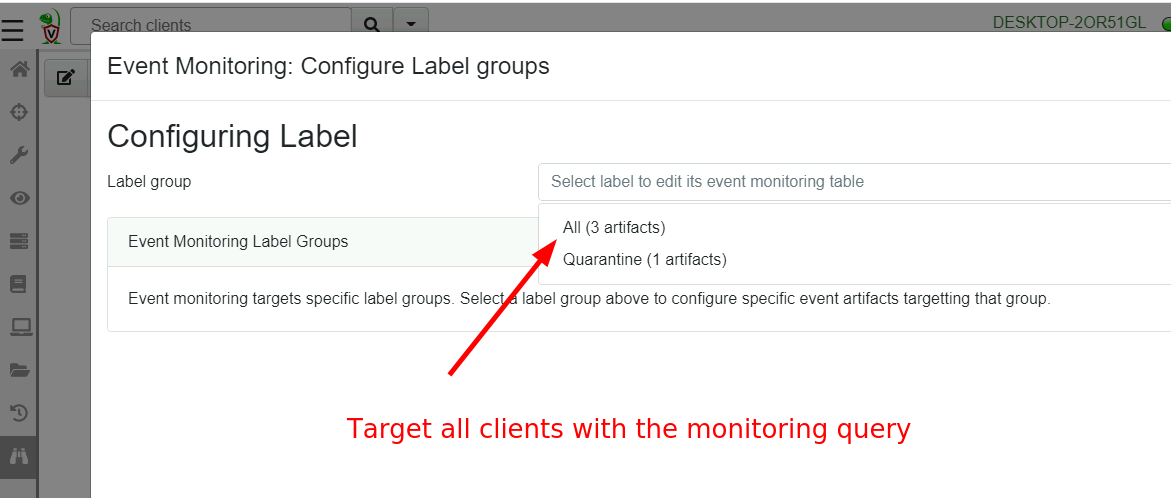
To add the new artifact to the client’s monitoring table I will select it in the next step.
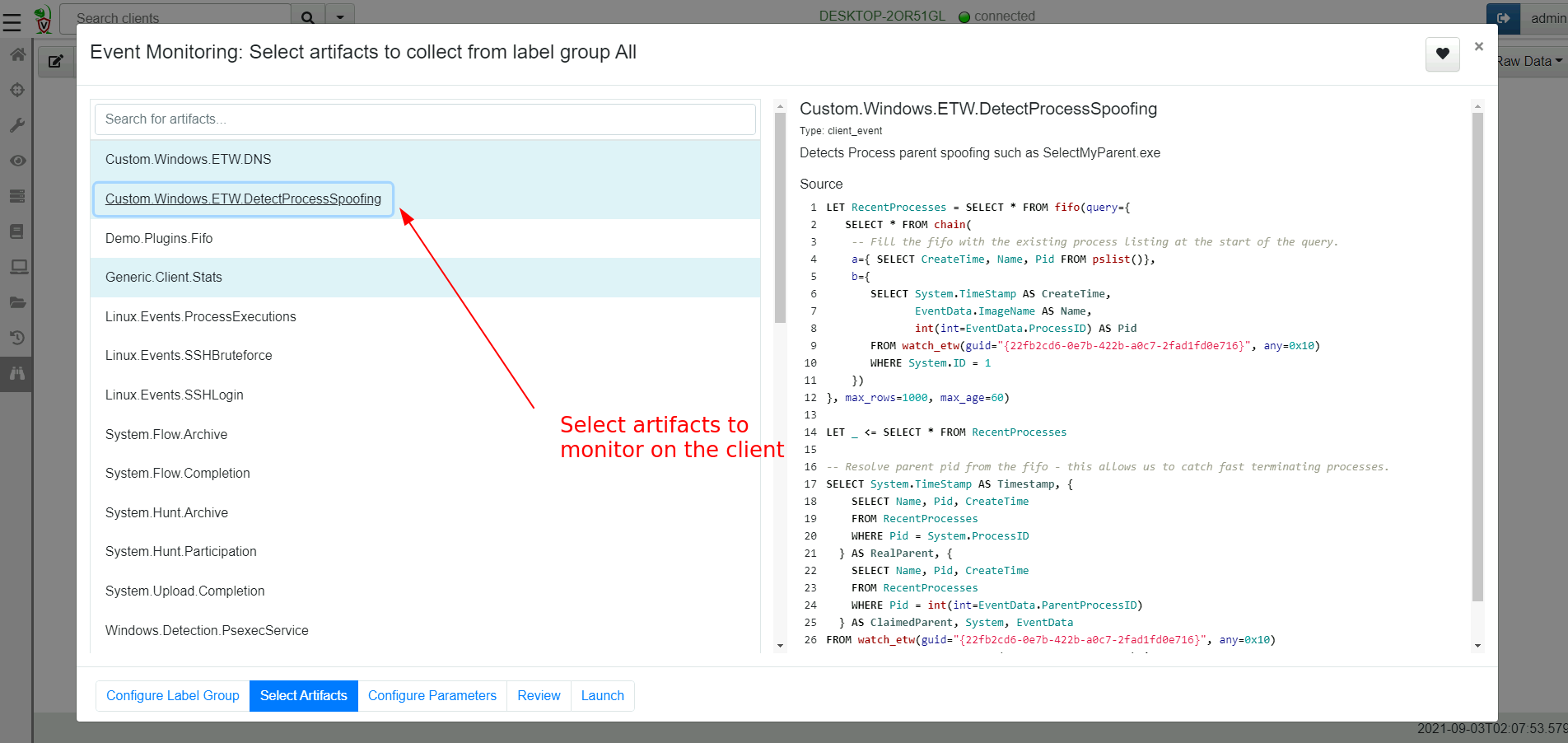
As soon as the monitor table is updated, all clients will refresh their configuration and start monitoring for spoofing. We can see this by viewing the query logs in the event viewer GUI

We can clearly see the client is installing some ETW sessions to monitor the provider. We also see a message every few minutes to remind us that the client is still monitoring for events. When an event is detected, the client immediately forwards the event to the server.
We can repeat our experiment and see the event generated by selecting
the Raw Data view in the GUI.
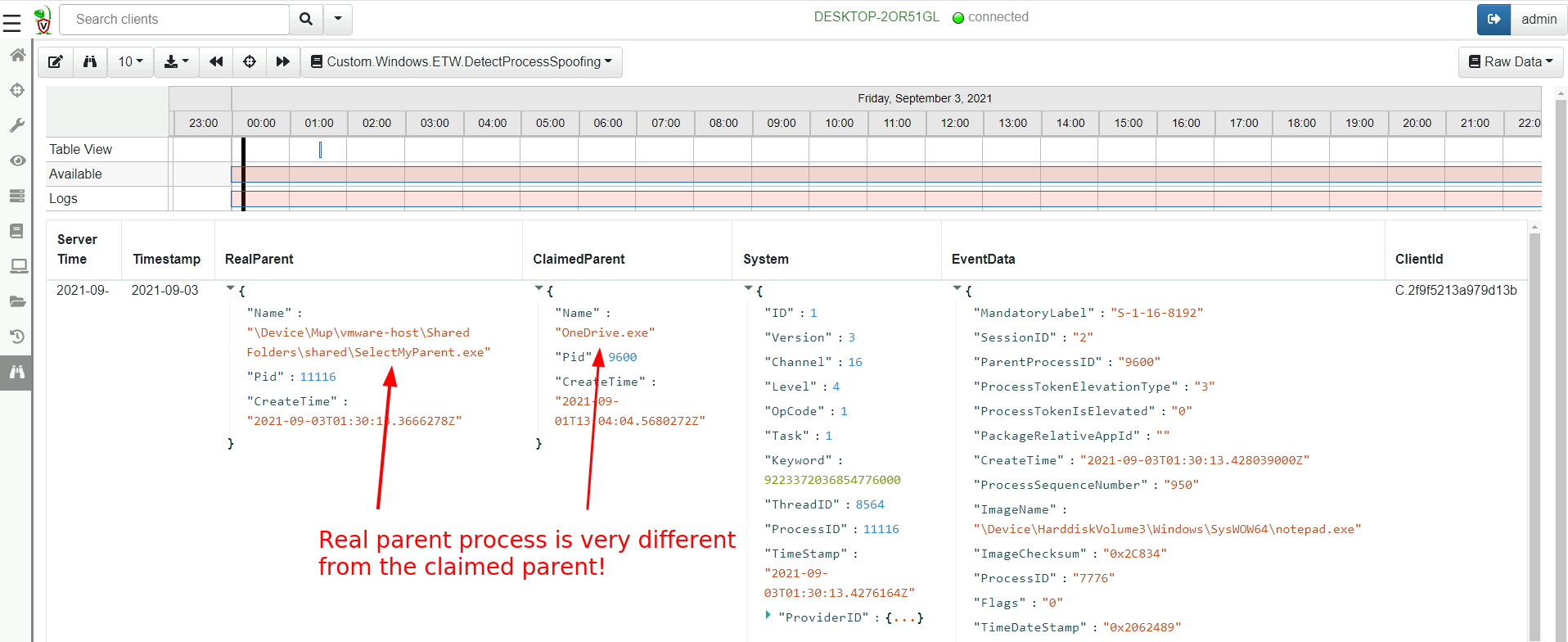
Again we see the events in the timeline, but this time the row contains all the enriched information, like the real identity of the parent process!
False Positives
After having this rule running for while you might notice some false positives - legitimate cases of parent process spoofing include the UAC prompt.

When elevating a command to “run as admin” the UAC prompt shows. Once the prompt is approved, the UAC manager launches the target program and spoofs the parent process.
Other cases of legitimate parent process spoofing include the Windows Error Reporting.
I thought it would be interesting to see UAC elevations and program crashes as well, so I did not filter those out.
Conclusions
In this post we implemented a sophisticated ETW based detection rule
in VQL. We then wrote an artifact to encapsulate it and shared the
artifact over the Velociraptor Artifact Exchange for other members
of the community to use.
After adding the artifact to our deployment, we then issued the monitoring query to all clients. When any client detected the spoofing behavior, an event was sent to server in real time. We could then utilize any escalation mechanism such as escalation through slack or a The Hive.
The interesting thing about this approach is that the detection rule is implemented on the endpoint itself. It is the endpoint that is watching the ETW events directly and making the decision about the anomalous nature of the event. Therefore the number of events actually streamed to the server is very small - most events will be high value events (such as real parent spoofing, UAC elevation and crashes).
Other Log forwarding technologies simply stream all process creation events to a large backend server, where detection queries are implemented in large data mining engines. This increases the volume of irrelevant events forwarded to the server (most process execution events are not malicious!), requiring more backend processing capacity.
Velociraptor’s approach is very different! Velociraptor moves the initial analysis and triage to the end point, implemented via the powerful VQL query language. This means we do not need a lot of processing on the backend to scale to many thousands of monitored endpoints, as the server only sees high value, low volume events. We are essentially using the end point itself to create a de-centralized detection engine for a fast and scalable alerting system.
Unfortunately an ETW watcher must be running at the time the process
is created, to be able to identify the spoofed parent. I am not
currently aware of a way to detect that an existing process’s reported
parent is not correct (Please let me know if you know of a way!). This
means that simply collecting information at a point in time after the
process is started (as in a Velociraptor pslist hunt for example)
does not reveal this information easily.
In the next blog post in this series we will be looking at how ETW can be abused by malware and some of the limitations around ETW.
If you have a great idea for a new detection query, take Velociraptor for a spin! It is a available on GitHub under an open source license. As always please file issues on the bug tracker or ask questions on our mailing list velociraptor-discuss@googlegroups.com . You can also chat with us directly on discord https://www.velocidex.com/discord .
There is still time to submit it to this year’s 2021 Velociraptor Contributor Competition, where you can win prizes, honor and support the entire DFIR community. Alternatively, you can share your artifacts with the community on Velociraptor’s Artifact Exchange.